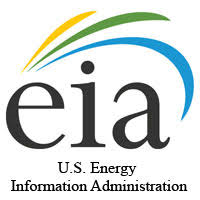
Although it is projected that Texas’ power market will double by 2035 largely due to renewable generation, it is likely that wind and solar generation will be increasingly curtailed without upgrades to the state’s transmission system. This forboding outcome is according to a recent analysis by the U.S. Energy Information Administration.
The analysis explains that grid operators must maintain a continuous balance between electricity supply and demand to assure power system reliability. If more wind and solar power is available for production than utilized by the grid, operators must curtail wind and solar generation to keep the grid balanced.
In 2022, the Electric Reliability Council of Texas (ERCOT), the grid manager for most of Texas, curtailed 5% of its total available wind generation and 9% of total available utility-scale solar generation. By 2035, the EIA projects wind curtailments in ERCOT could increase to 13% of total available wind generation while solar curtailments could reach 19%.
In its analysis, the EIA assumes that no significant upgrades will be made to the ERCOT transmission grid so that the EIA could isolate how the existing transmission system affects future renewable generation.
Wind and solar power are intermittent sources of generation that only generate electricity when the wind is blowing or the sun is shining. The EIA analysis shows that on days with more wind and solar generation and strong system electricity demand, limited transmission line capacity restricted wind and solar generation flows resulting in curtailments. These types of curtailments account for 36% of the projected curtailments in 2035, which could be reduced by upgrading the transmission system.
Nearly 64% of the wind and solar curtailments in the analysis happened when the energy supply from high wind and solar resources outpaced low system electricity demand. An increase in demand, such as battery charging, could potentially reduce these types of curtailments.
In this case study, the EIA used its Annual Energy Outlook load forecast for 2035 and included its expectation of successfully completed power plant capacity additions. To help identify where the new capacity would be located on the transmission system, it relied on ERCOT’s Generator Interconnection Status Report Generator Interconnection Status Report to develop the electricity portfolio capacity additions for this analysis, which included wind, solar, battery storage and natural gas resources.
To review the EIA’s Annual Energy Outlook click here.
To review ERCOT’s Generator Interconnection Status Report, click here.
To read the full analysis including methodology and findings, click here.






